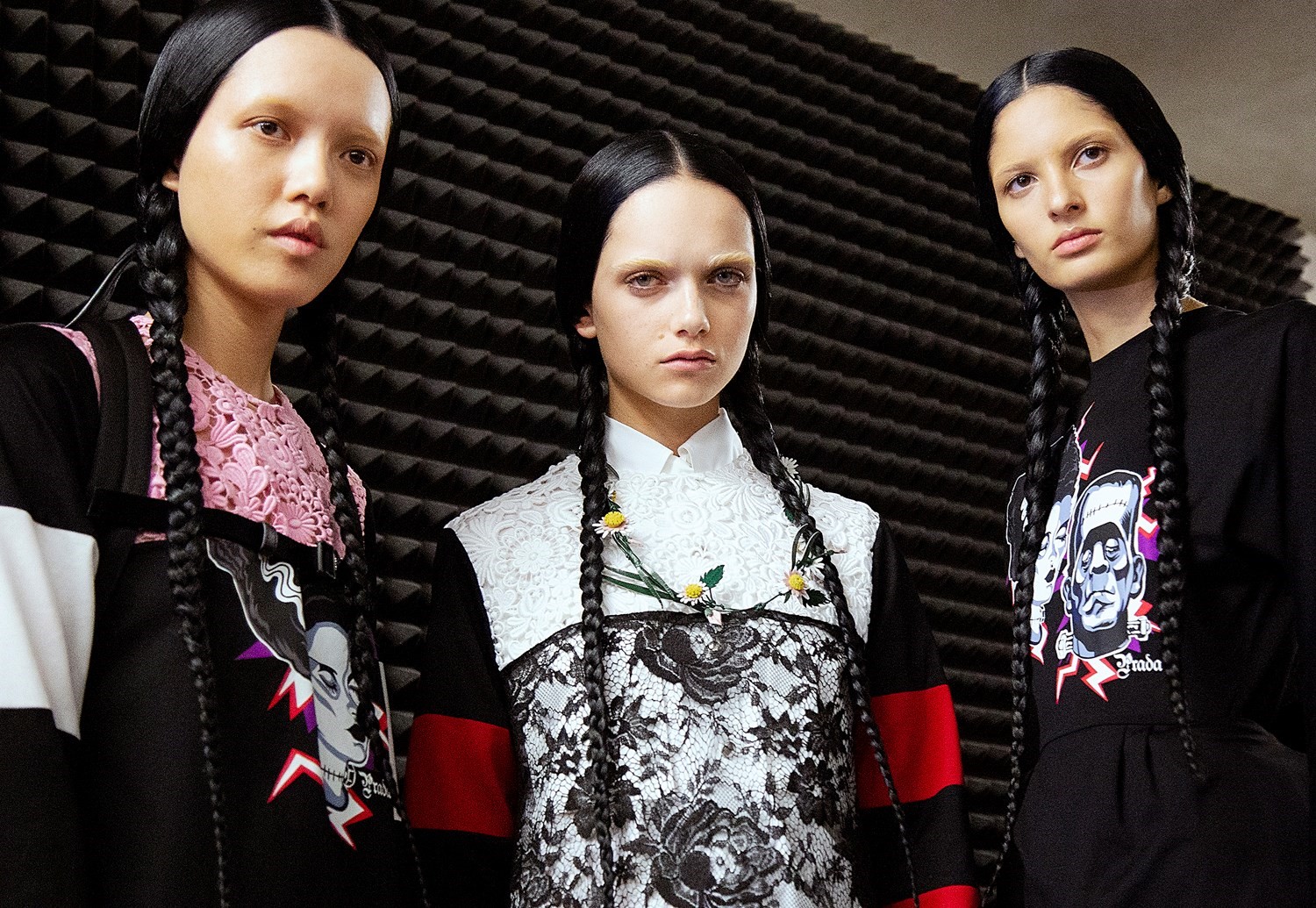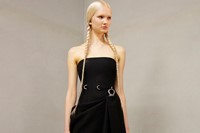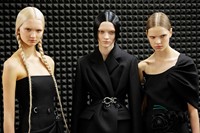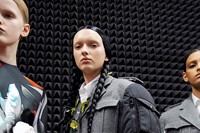Miuccia Prada titled her Autumn/Winter 2019 collection Anatomy of Romance – a phrase that was printed in black across chocolate-box cerise on every seat at the show. What does that mean? Well, it means a dissection of the signs and signifiers of the romantic: both the cloying, sugary Mills & Boon novel variety, and the 19th-century movement in art and literature that emphasised the natural over the rational – the heart over the head – and celebrated individuality. A prime example of that, of course, is Mary Shelley’s Frankenstein and both that work and the myriad schlocky-horror spin-offs also found ample reflection in Miuccia Prada’s universe, where models pounded out in dresses composed of the stereotypes and composite parts of the sum whole of love, Frankensteined together in Prada’s oft-imitated but never equalled fashion. Prada termed them “simple, archaic gestures of love” – here are the ones we spotted.
Flowers
Probably the oldest symbol of romance in the book, its use as a modern gesture traces back to Ottoman Turkey, where flowers (and fruit) were used as means of communication in the harems. The notion was brought to Europe by Mary Wortley Montagu in the early 18th century, after which the craze of floriography gained popularity. Some of the meanings were complex and have been largely lost in time – who knew (or rather, knows) that a bouquet of wild tansy is a declaration of war? But the idea of roses, specifically red ones, as a symbol of both the rewards and dangers of love (the latter being the thorns) has now become codified into modern life. For this collection, three-dimensional stems, like prom-night corsages, were strewn across bags and dresses, as well as photographically printed on crisp, humble cottons.
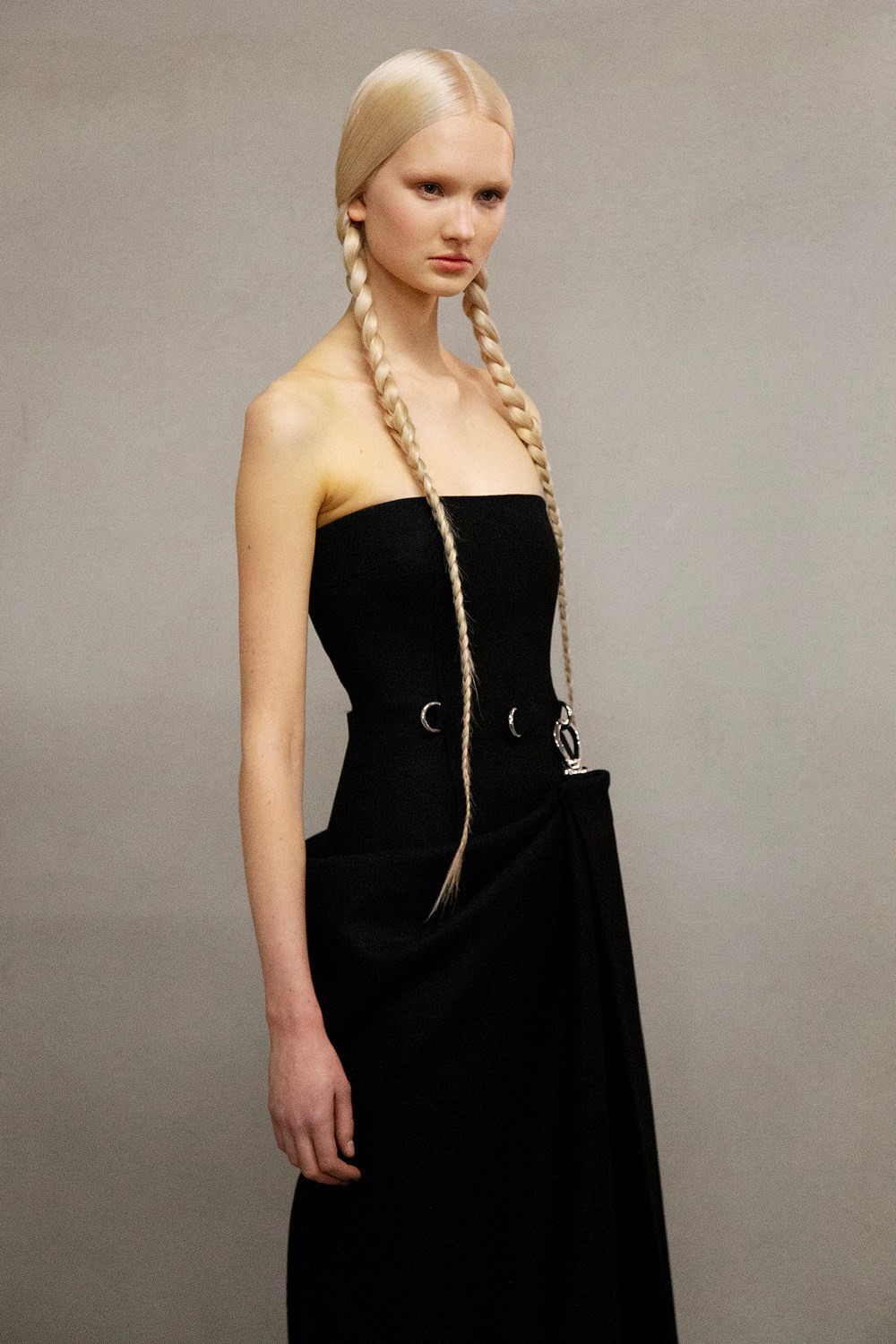
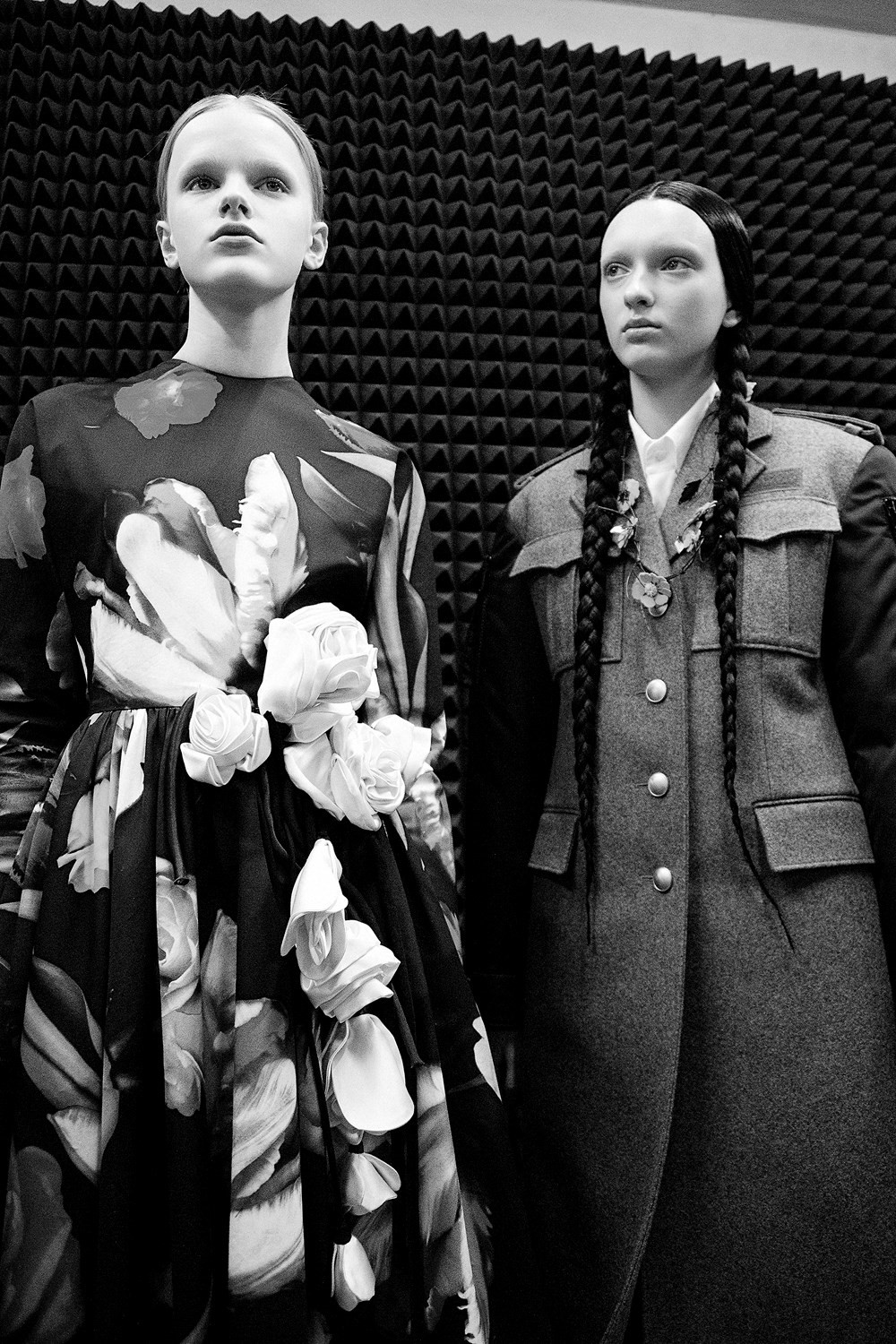
The Coup de Foudre
Literally translated as a thunderbolt – which appeared as intarsia knits and printed onto Prada’s clothes – this term has a double meaning. It can also mean love at first sight, the idea of two people ‘thunderstruck’ by love. Of course, here, it also underscores the inspiration taken from the horror movies Frankenstein (1931) and Bride of Frankenstein (1935) – the monster of which is a hero Miuccia Prada sees as in search of love; the sequel, of course, being where he finds his perfect match (or thereabouts). The thunderbolt is, of course, what animates Frankenstein’s creation – itself a fundamentally romantic idea, the notion of creating ideal life, an emblem of a hopelessly romantic search for the ideal.
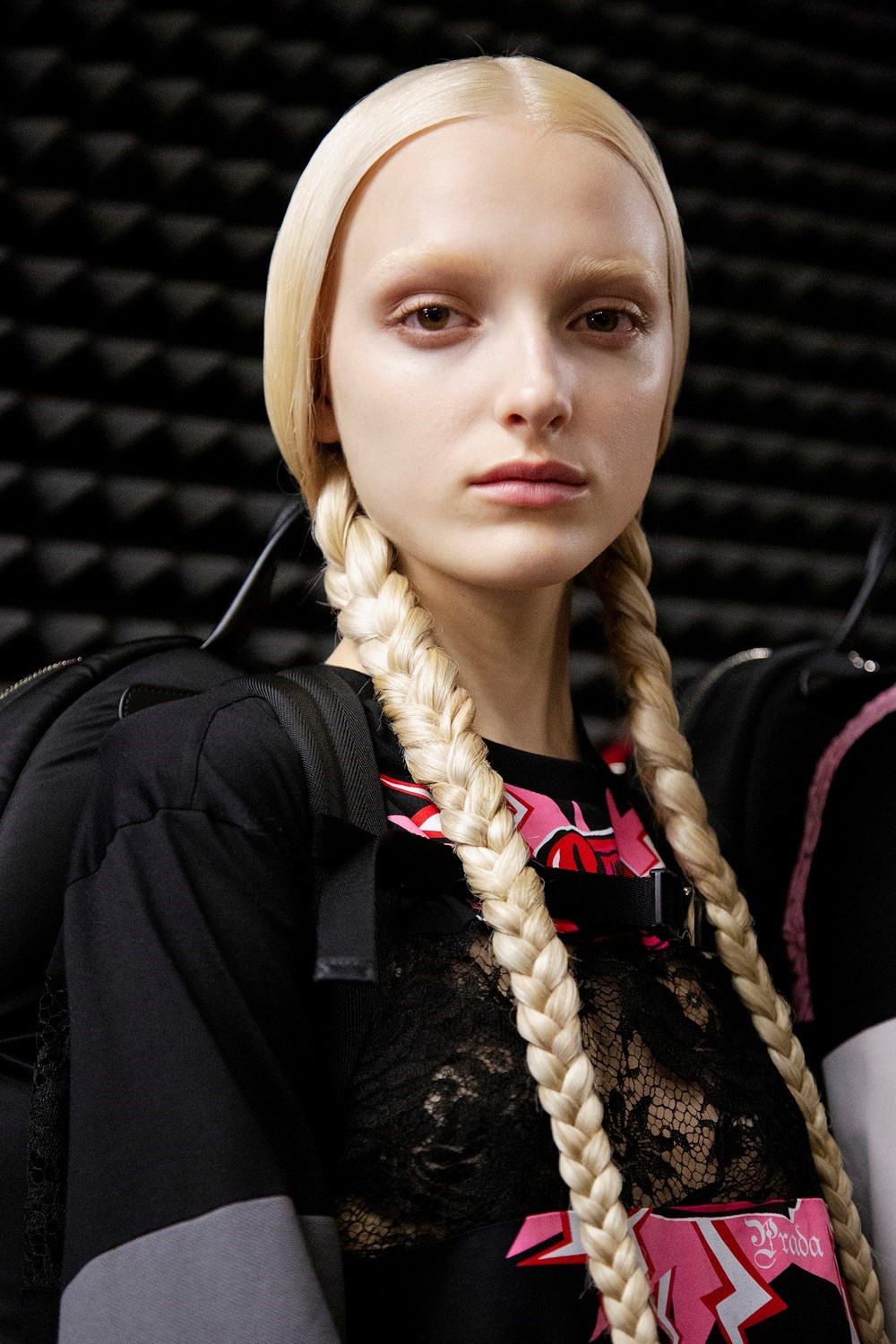
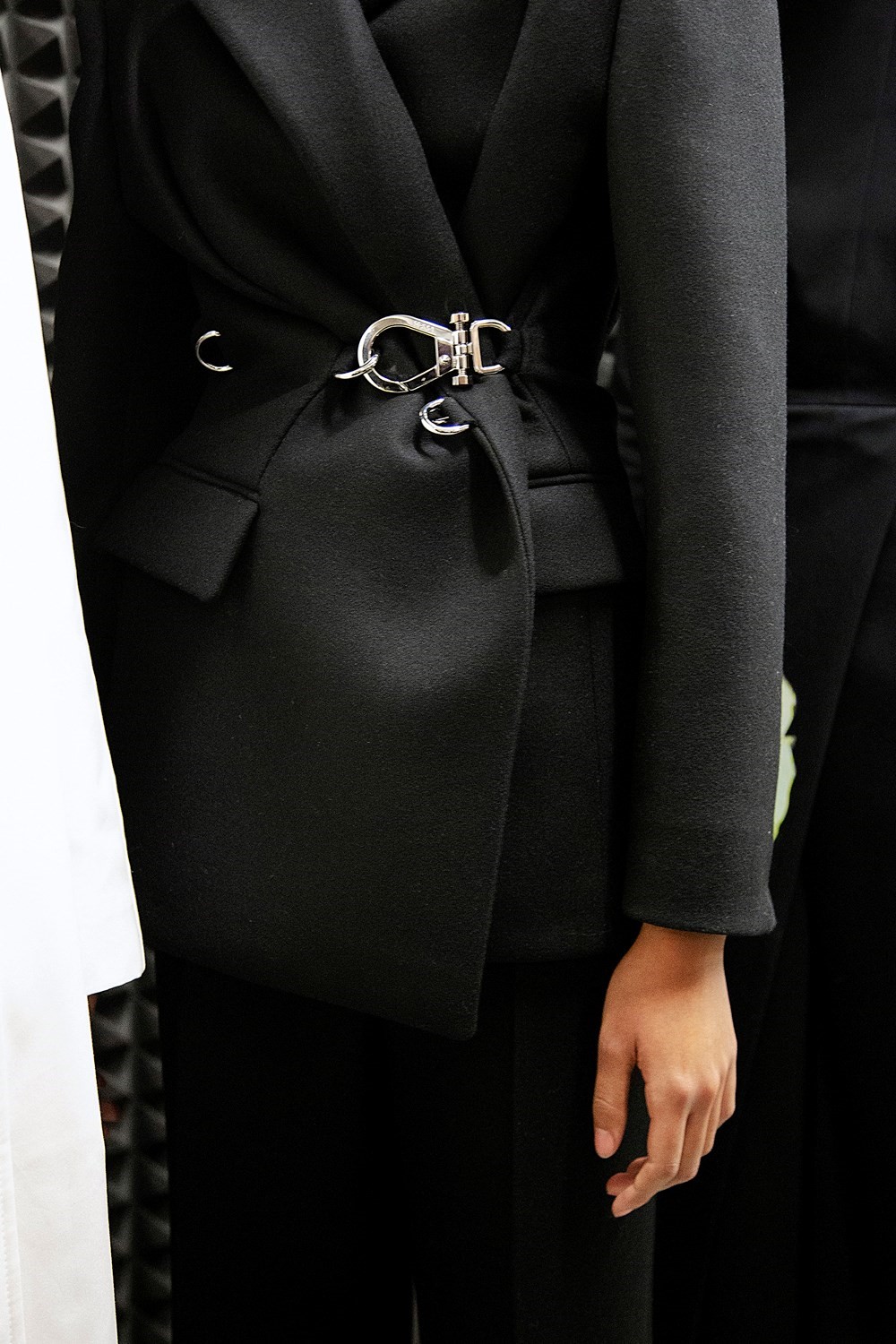
Bows and Ribbons
There’s no symbolism to bows – although the idea of knotting two pieces of fabric together colour be seen as mirroring romantic union, and many cultures – such as Orthodox Russian – use the act of knotting the hands together as part of a wedding ceremony, as a symbol of matrimony. There is, of course, a contemporary sign language associated with bows and ribbons – they wrap presents, offerings to love. Prada’s fat, knotted satin bows resemble the kind that parcel up chocolates offered on first dates.
Lace
Lace is the ultimate fabric of romance – redolent, simultaneously, of underwear and bridal-wear, veils of seduction and chastity. Prada used it liberally, layered and twisted over dresses, draping bodies in feminine swathes. Another gesture of love.
